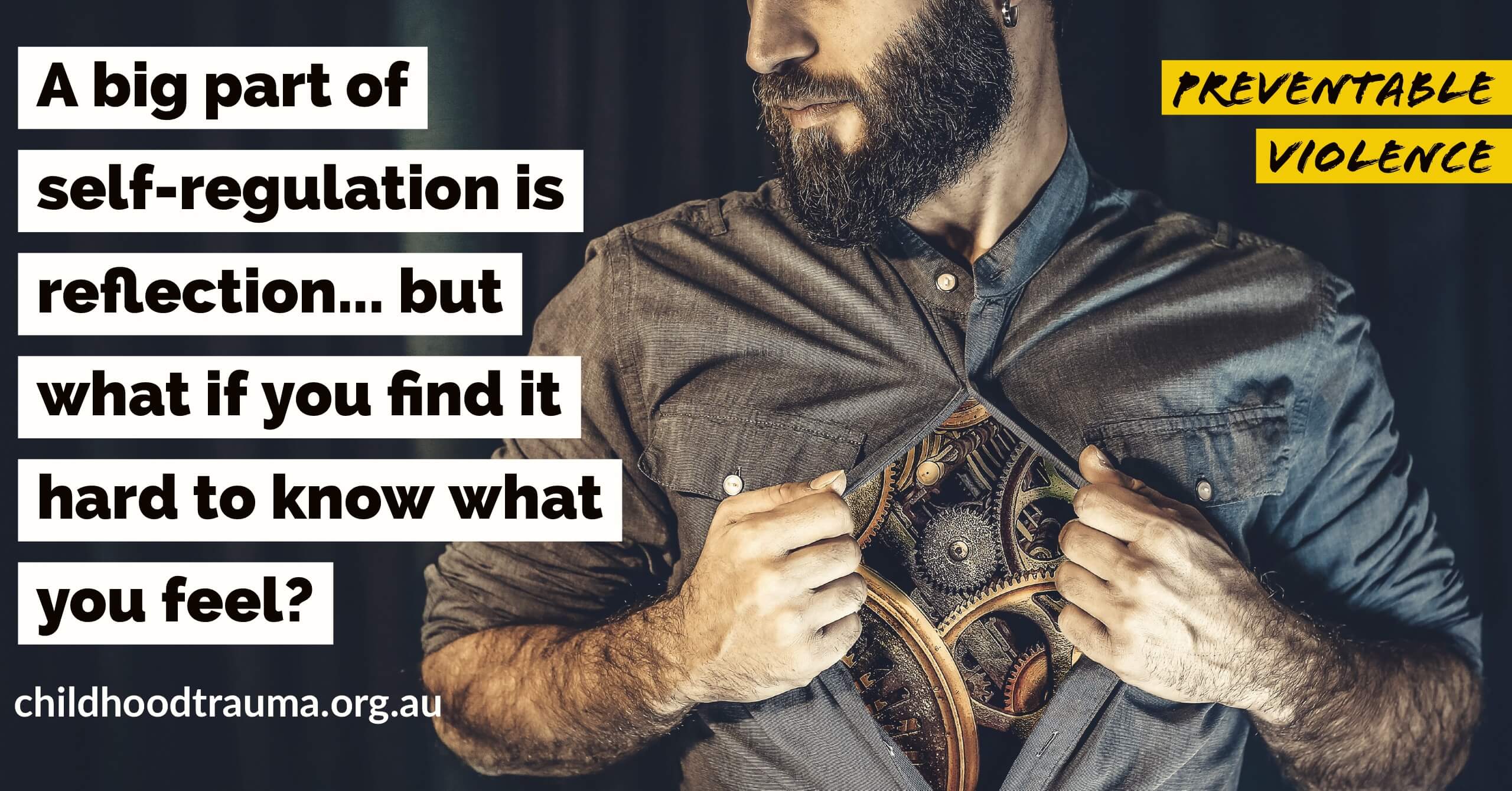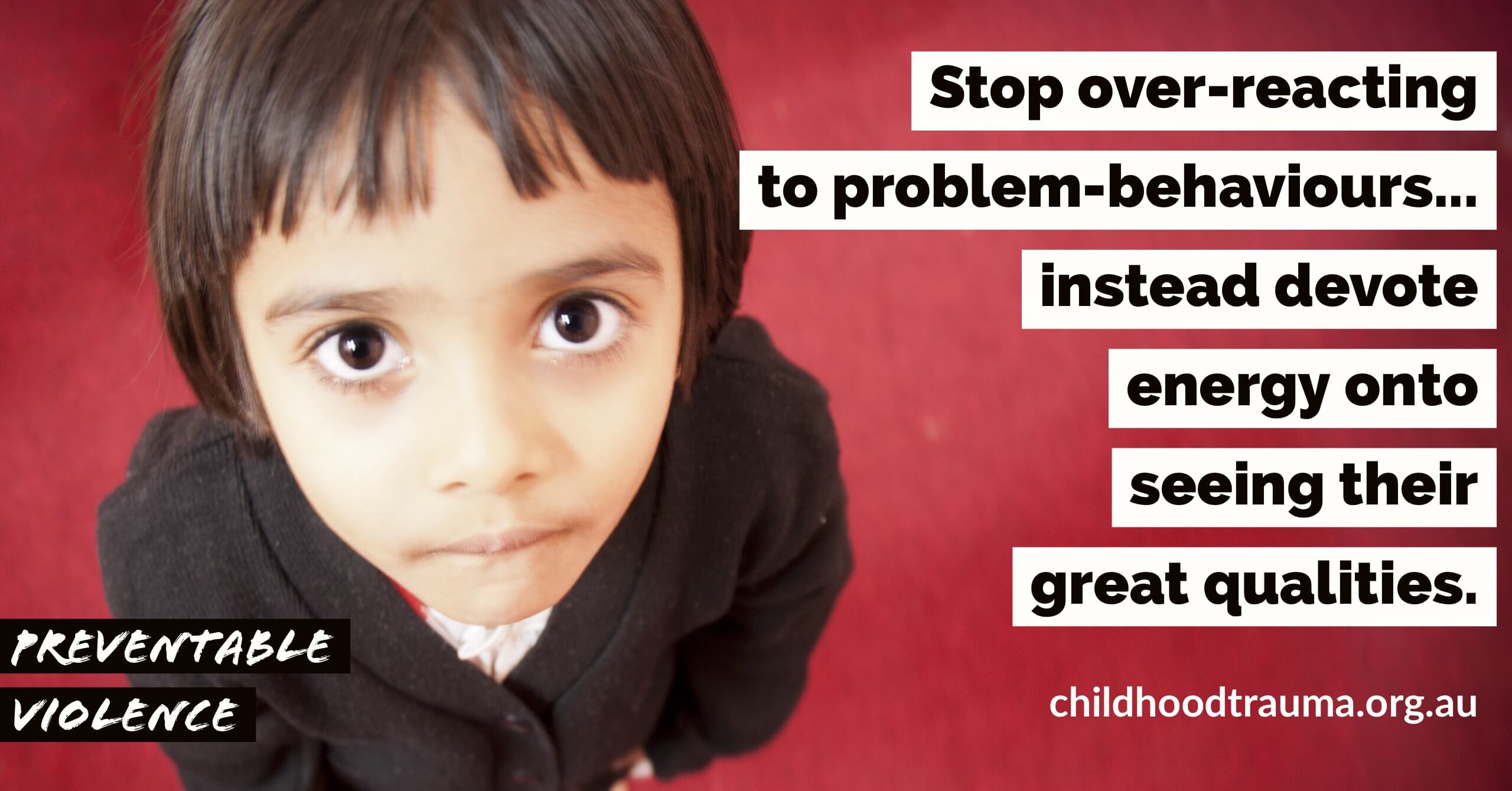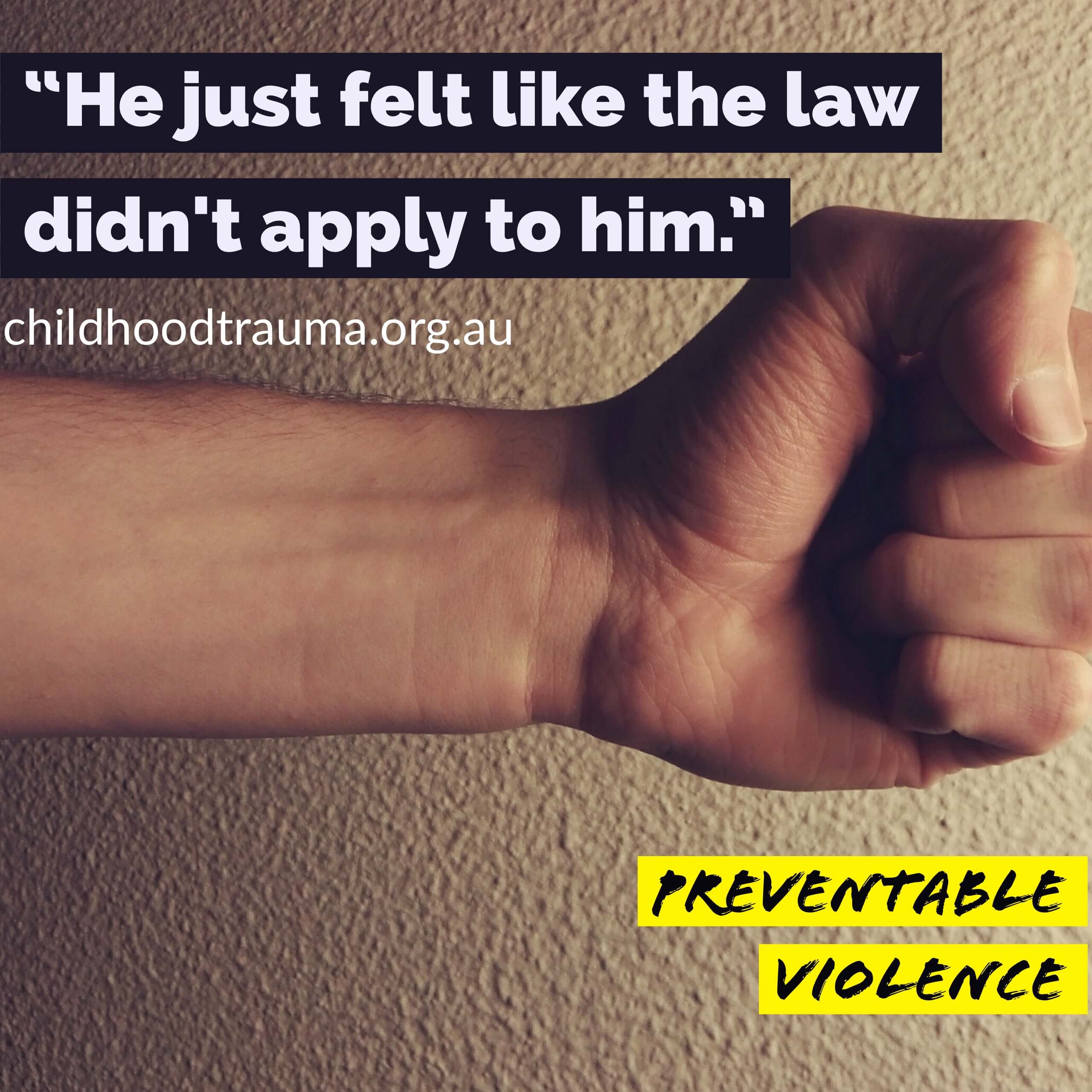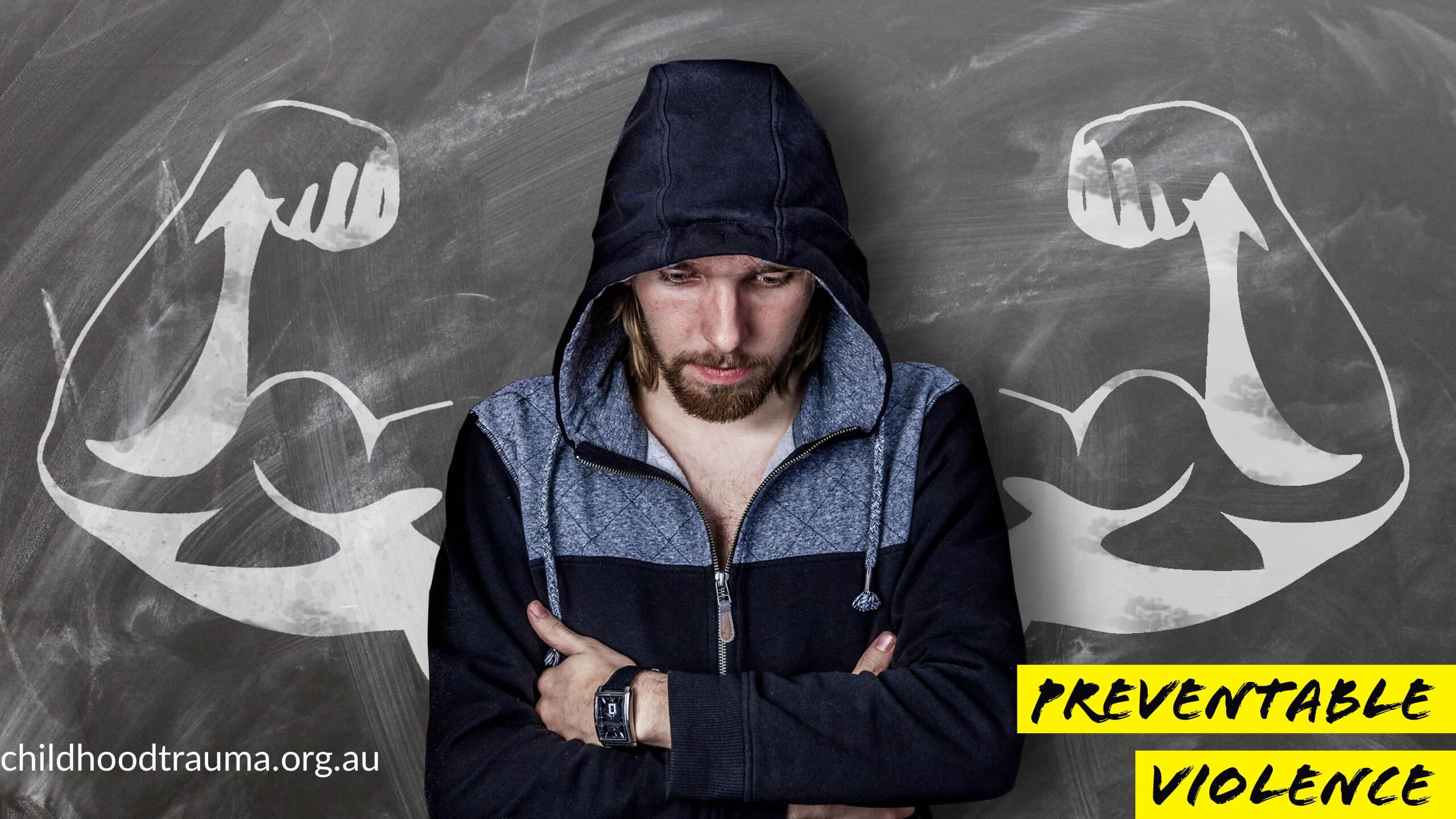
Preventable Violence – Is engaging fathers the solution to creating a safer society? Part 3
In parts one and two we have explored the idea of stopping violence by equipping men with the four non-violence gates of 1., Self-control, 2., Respect of the law, 3., Empathy; and 4., Using better tools. In this third part, I will demonstrate how the non-violence gates can be used in clinical work, using the case study of“Ryan”.
Ryan is a 17 year-old young man who was referred to me after he king-hit another young man, who had slept with his ex-girlfriend.
All therapeutic work begins with the premise of first do no harm and it is important to recognize that if a person is using violence, this is also a sign of self-regulatory failures. This usually suggests that something has gone awry in their developmental journey, and it’s not safe to assume that they have good reflective skills. In which case, asking probing questions can of itself be a disorganizing experience for the young person, instead of the helpful process we intend.
For example, many young men who use violence lacked the kind of parenting that would have given them an experience of secure attachment, where the parent helps the small infant or child to understand their experience, when upset or overwhelmed. For example, consider a toddler who is scared by a dog’s barking near the playground and runs to the mother, clinging tightly in fear.
If she holds him and says, ‘Oh did the big doggy scare you?’ and the child nods, then she has helped him to not only feel safe by holding him closely and protectively, but she has given language to his experience. He has a sense of coherence where previously he was very fearful.
If the parent were to see his fear in a negative light and push the child away saying, ‘Don’t be such a woos’, then he has not found safety, (a secure-base in attachment terms), but more importantly, he has not been able to make sense of his experience. He feels alone with his fear and has a sense of rejection. These are very difficult feelings to tolerate and impossible to manage all by yourself, when you are a small child.
The boy can’t just continue to feel frightened and rejected on his own, so he evacuates these feelings using crude coping-strategies such as dissociation, numbing and denial. These become his survival strategies, and for the therapist to ask a seemingly normal, exploratory, question, of ‘How did you feel about that?’ we are not just opening up a discussion about his feelings but we may also be opening up an attachment ‘can of worms’ by offering ourselves as the safe-haven he has always wanted, but learnt to survive without.
This is why I like to use the 4 gates visual aids, so that the reflective-process has more scaffolding around it, which I believe helps the client to organize his thinking and reflecting but also reduces the intensity of the therapeutic relationship to a safer level where dependency-issues are not as powerfully triggered.
When I drew the four gates on my whiteboard and show how a violent impulse can either be stopped by the four gates or goes through them, it sends Ryan into reflecting on his life and he says that in his family that no-one had self-control and his mum and step-dad “just went at it like hammer and tong’.
He clarifies that it was verbal abuse and when we talk later about the first gate of self-control he describes a pivotal moment where he decided that instead of being frozen in the face of their fighting he said to himself, “F#ck this, I’m gonna f#cken do it too.”
 A big part of self-regulation is reflection. The gap between a trigger and action is mediated by good reflective skills. But what if you find it hard to know what you feel? What if you don’t have a trauma-framework in your own mind, at the ready, for moments when you are triggered, that would allow you to put your over-reactions into perspective where your overreaction was actually normal given your trauma?
A big part of self-regulation is reflection. The gap between a trigger and action is mediated by good reflective skills. But what if you find it hard to know what you feel? What if you don’t have a trauma-framework in your own mind, at the ready, for moments when you are triggered, that would allow you to put your over-reactions into perspective where your overreaction was actually normal given your trauma?
When Ryan first came into my consulting room I saw a powerful intensity in his eyes. It looks like a mix of pain and fear but he’s also had a confidence and swagger. I have the feeling that if he wanted to, he’d just get up and leave, if he decides this therapy session is not for him.
As we get talking it becomes clear that his confidence masks a distinct inability to label his feelings and reflect on his use of violence. My task is to help him to piece together how he came to viciously assault someone.
When it comes to the first gate of Self-Control, many young men carry a limiting-belief of being the sort of person who always ‘loses his sh#t’. A nice strategy to use here comes from Clark Baim, who asks his clients ‘Can you recall a time when you felt angry but didn’t get violent?’ This is a strengths-based approach that allows the young person to see exceptions when they have exercised self-control. I like to say that self-control is like a muscle because the more you exercise it, the bigger it gets and the better you will get at it.
I need to make the therapy safe in other ways for the young person to engage with the process. Those of us who have had the pleasure of training with Dan Hughes can draw upon his work in letting the client feel that we are attuned, non-shaming and respectful of their experience, however I also draw upon the work of Howard Glasser and his Nurtured Heart Approach.
Howard developed this approach out of his work with young people with a diagnosis of ADHD. Time and again he saw how the greatest attention and focus from adults, was given to his young person’s problem-behaviours and that this was how the young person found connection with adults.
He saw this as ‘energetically’ rewarding problem-behaviours and it made no sense to Howard. On the other hand, he found that if he could zero-in on the child’s great qualities (‘their greatness’) and reflect this back to them (the success of who they are in the moment) then he could ‘energise their success’ instead of reinforcing problems.
 He coached teachers and parents on how to stop over-reacting to the child’s problem-behaviours, whilst maintaining clear rules and expectations, but devoting their energy and focus onto really seeing the great qualities in the child. For example if, Mary, who is often disobedient and oppositional in class, is playing netball at school, and is playing to the rules, her coach might understandably see this as ‘normal behavior’. What if, however, the coach reflected back to Mary exactly what he sees, with a comment about the value of her behaviour: “Hey Mary, I see you playing within the rules of netball, and that shows me you have respect for the game. That makes me proud to have you on my team, keep it up!”
He coached teachers and parents on how to stop over-reacting to the child’s problem-behaviours, whilst maintaining clear rules and expectations, but devoting their energy and focus onto really seeing the great qualities in the child. For example if, Mary, who is often disobedient and oppositional in class, is playing netball at school, and is playing to the rules, her coach might understandably see this as ‘normal behavior’. What if, however, the coach reflected back to Mary exactly what he sees, with a comment about the value of her behaviour: “Hey Mary, I see you playing within the rules of netball, and that shows me you have respect for the game. That makes me proud to have you on my team, keep it up!”
Sometimes the Mary’s of the world, don’t like gushing positive feedback and if you were to tell her she’s ‘Awesome’, she might put on a sullen face and in her head say to herself, “No I’m not”. Kids with low self-esteem crave to feel good about themselves but resist complements because it hurts: Niceness and warmth feel too-little, too-late, to many kids, especially those with disorganised attachment.
But here, Mary hasn’t simply been given a compliment, she’s just been told the facts: The truth is that she was following the rules. Maybe five minutes later she tries to cheat, but in that moment she was successfully following the rules. She can’t dispute that. The coach is saying he’s proud – that his feeling, so Mary can’t just dispute or dismiss that either. But it’s also not so gushing that it overwhelms and disorganizes her.
More than that, if said with a genuine positivity, most young people feel like the adult is really ‘seeing’ them. At a time of identity-formation this is hugely powerful and helpful to the young person.
When I see Ryan, I view his use of violence as unacceptable, but I’m looking for ways to help him to channel his intensity in positive ways. The Nurtured Heart Approach aims to make the positive compelling and that the young person sees that there’s nothing positive to be gained through acting negatively!
In this way, with Ryan, I was careful to not give too much attention to the violence, lest that become the ‘currency of our therapeutic exchange’. Instead I sought to find out who Ryan really was, at essence, and to connect to this part of him. This is the part that can drive his use of the four gates.
Blending the Nurtured Heart Approach with the four gates means ‘energising his success’ when Ryan exercises self-control, respect for the law, empathy and uses better tools.
I am, however, always looking to identify and understand the part of the person that drives the violence, too. It is this part that will justify losing self-control, find ‘loopholes’ that ‘exempt’ the person from respecting the laws of the land, that over-rides an empathic response and that insists that violence is the tool to use in the situation.
In Ryan’s situation I knew that he had seen a pic on snapchat of his ex-girlfriend kissing a mate of Ryan’s. Upon seeing the picture he took off to a couple of the places that everyone hung out and when he saw the guy, he ran at this now ex-mate of his and king-hit him from behind.
To find out about the part of him that over-rides the four gates and drives his violence, I asked him what his ‘mission’ was, after he saw the picture. He said “I wanted to teach him a lesson.” The temptation is to judge such comments but that would not be helpful. I have to help him to find the part of him that judges such a mission as unacceptable.
 Instead I reflect back to him how it is that part that over-rides the laws and ethics prohibiting violence. When we discuss the second gate of laws and ethics, he opens up that he just felt that the law didn’t apply to him. He says that he’s always been a bit cheeky like that. Clearly he likes this law-breaking side to himself so I don’t judge this, instead I good-naturedly joke with him about how king-hitting someone might stand up in court. It is so very different when spoken out-aloud to what it’s like in his mind.
Instead I reflect back to him how it is that part that over-rides the laws and ethics prohibiting violence. When we discuss the second gate of laws and ethics, he opens up that he just felt that the law didn’t apply to him. He says that he’s always been a bit cheeky like that. Clearly he likes this law-breaking side to himself so I don’t judge this, instead I good-naturedly joke with him about how king-hitting someone might stand up in court. It is so very different when spoken out-aloud to what it’s like in his mind.
I don’t need to rub his nose in it, it’s very clear that the law is the law and I can tell he sees that too. I will however keep reinforcing the legal and ethical elements of acting violently.
The victim was badly hurt by the king-hit and Ryan had since apologized to him. The consensus-view of his friends was that hitting him for kissing his ex-girlfriend was valid but a King-hit was cowardly. Ryan felt ashamed because he also thought it was cowardly. We have a serious conversation about how he could have killed the young man and that he may still be charged by the Police.
These costs of violence are in stark contrast to the pro-offending beliefs and attitudes that seemingly endorse violence and we have some work to do in the light of his peer’s pro-offending attitudes.
Dr Bob Pease1 views violence as ‘individually-willed but socially constructed’ and this is reflected in the endorsement by Ryan’s friends of certain levels of violence as being justifiable. I might be able to help Ryan adopt the four gates but what about his friends, family and the wider societal attitudes to women and violence?
You might be wondering about how to bring empathy into a scenario like the one above. Ryan had a kind of guilt-empathy towards having king hit the victim but at the height of his rage he obviously had no empathy towards his victim, who he viewed as ‘the enemy’.
A wise meditation teacher once told me that when we say something negative to another, our body hears it as directed towards ourselves. I say this to Dylan who looks at me like I’m some hippie-weirdo but he also doesn’t just dismiss me out of hand. I continue saying, “If you call out to someone that they are a “f@#king idiot”, your body hears this as a truth about you. You are attacking yourself in a way. That’s not good for you, is it?” It’s not that he agrees with me, more like I have confused his habitual thinking and he’s assessing whether I am saying a truth. Perhaps I’m just planting an existential seed to water over time.
I also ask about the emotion he felt underneath the rage, as I hope to equip him with the skills for emotional problem-solving2, so that rather than acting out his feelings he can have empathy towards himself and work with his feelings. He describes how hurt and rejected he felt after she broke up with him. When he saw her kissing his mate, he felt betrayed by him and rejected and hurt by her all over again. These are all very hard emotions but none excuse violence.
 The traditional masculinity does not permit the so-called feminine feelings of fear or pain. Instead, violence is used to attack the source of pain. I ask him what he would do if he got an ACL injury playing footy. He describes how he’d be helped by the medical profession and I ask, “So when you feel an emotional injury, you used the tool of violence but when you feel a physical injury you treat the injury?”
The traditional masculinity does not permit the so-called feminine feelings of fear or pain. Instead, violence is used to attack the source of pain. I ask him what he would do if he got an ACL injury playing footy. He describes how he’d be helped by the medical profession and I ask, “So when you feel an emotional injury, you used the tool of violence but when you feel a physical injury you treat the injury?”
This leads us towards him having empathy for himself in times of pain so that he will get help to work through the pain. It also takes us into how could have used better tools to get a different outcome. I ask Ryan why he couldn’t have just rung his mate and told him what he thought about the situation, knowing full-well how the traditional masculinity would view that as ‘weak’.
When a parent is raising a toddler, they are always intervening in the toddlers use of aggression, for example, “No you can’t hit Hamish for taking the truck, if you are still using the truck then use your words and say, ‘Hamish, I’m still using the truck, can I have it back please?’ The problem for all adults is that in moments of stress despite the many years on from toddlerhood, we still ‘lose our voice’ as couples-therapist, Dan Wile says.
Furthermore, when men who use violence, lose their voice, violence ensues, in contrast to those men who have the four gates. It reflects a negative value towards non-violent problem-solving.
To redress this unhealthy view, it is essential to highlight that most men use the four gates. This is the standard that all men need to be held accountable to achieving. Exercising self-control in the face of powerful triggers needs to be viewed as the mark of a man’s integrity; a source of pride in one’s ability to keep everyone safe and taking responsibility to problem-solve difficult situations.
I believe that the four gates of self-control, respect for the law, empathy and using better tools, can become the pathway to a healthy manhood for all men. I believe that we are at a point in history with unprecedented political will and community support that can drive significant changes to prevent violence over the coming years. It will be to everyone’s benefit.
References:
Pease, B (2002) Men and Gender Relations. Tertiary Press: Croydon.
O’Leary, T (in press) The Relationship First-Aid kit, Hay House Publishing Australia: Sydney
Resources:
The 4 Gates:
www.my4gates.com
Dan Hughes
http://childrenssuccessfoundation.com/about-us/
The Nurtured Heart Approach
http://childrenssuccessfoundation.com/about-us/
